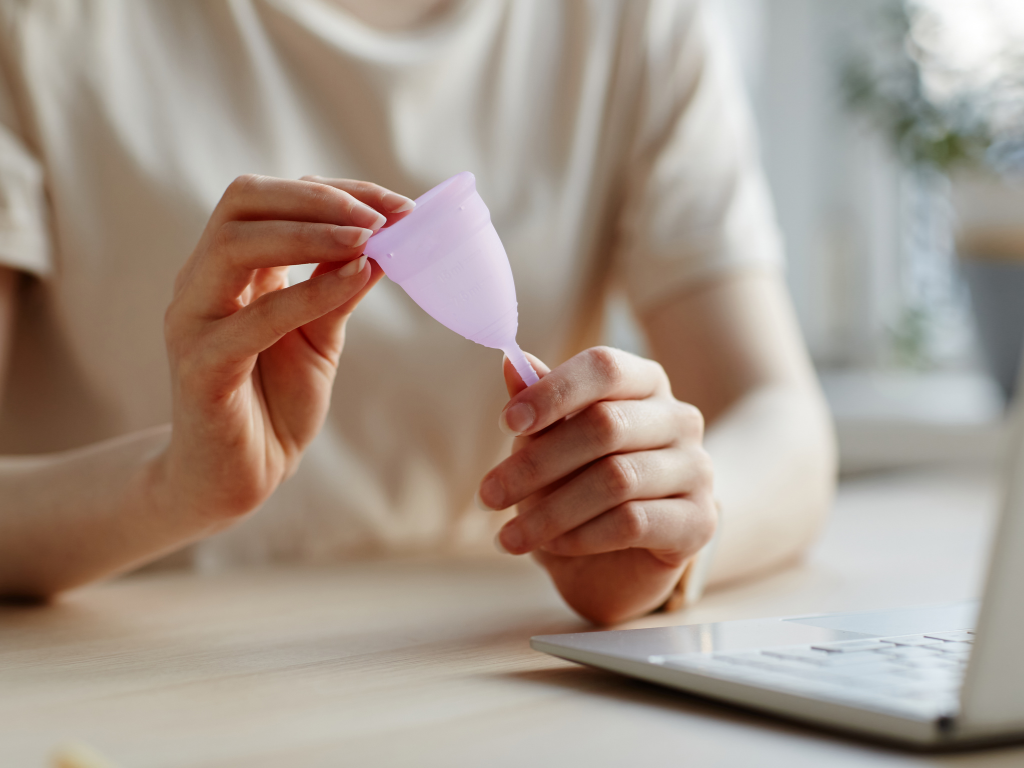
Introduction to Menstrual Cups
Menstrual cup have gained popularity as an eco-friendly and cost-effective alternative to traditional menstrual products like pads and tampons. These flexible cups, usually made of medical-grade silicone or latex, are inserted into the vagina to collect menstrual blood rather than absorbing it like pads or tampons.
Benefits over Traditional Menstrual Products
Unlike pads and tampons, menstrual cups can be reused for several years, reducing both environmental waste and the long-term cost of menstrual care. Additionally, they can hold more fluid than tampons, making them suitable for heavier flow days.
Choosing the Right Menstrual Cup
Selecting the right menstrual cups involves considering factors like your age, flow volume, and pelvic floor strength.
Size and Shape Considerations
Menstrual cups come in different sizes to accommodate variations in vaginal anatomy and flow volume. Those who have given birth or have a heavy flow may require a larger cup, while younger users or those with a lighter flow may prefer a smaller size.
Material Options
Most menstrual cups are made of medical-grade silicone or latex, which are safe and hypoallergenic materials. However, individuals with latex allergies should opt for silicone cups to avoid potential reactions.
Also Read: How Does Birth Control Affect Your Period?
How to Insert a Menstrual Cup
Inserting a menstrual cup may seem intimidating at first, but with practice, it becomes as easy as using any other menstrual product.
Step-by-Step Guide
- Wash your hands thoroughly with soap and water.
- Fold the menstrual cup using a folding technique that works best for you (e.g., C-fold, punch-down fold).
- Relax your pelvic muscles and find a comfortable position, such as squatting or sitting on the toilet.
- Insert the folded cup into your vagina, aiming towards the lower back.
- Once inside, release the fold and allow the cup to unfold and create a seal against the vaginal walls.
Tips for Comfortable Insertion
- Experiment with different folding techniques to find the most comfortable one for you.
- Use water-based lubricant if you experience discomfort during insertion.
- Relax and take deep breaths to ease any tension in your pelvic muscles.
Wearing and Using a Menstrual Cups
Wearing a menstrual cup should be comfortable and leak-free when inserted correctly.
Ensuring Proper Placement
After inserting the cup, run a finger around the base to ensure it has fully unfolded and created a seal. You may also gently tug on the stem to check if the cup is secure.
Dealing with Leaks
Leaks may occur if the cup is not positioned correctly or if it overflows. To prevent leaks, empty the cup regularly, especially on heavy flow days, and make sure it is inserted high enough in the vagina.
Cleaning and Maintaining Your Menstrual Cup
Proper cleaning and maintenance are essential for the longevity and hygiene of your menstrual cups.
Regular Cleaning Routine
After each use, wash the cup with mild soap and warm water, making sure to thoroughly rinse away any soap residue. Avoid using harsh cleansers or scented soaps, as they can irritate the vaginal area.
Sterilization Methods
At the end of each menstrual cycle, sterilize the cup by boiling it in water for 5-10 minutes or using a specially formulated menstrual cup cleanser. Store the cup in a breathable container when not in use.
Also Read: Parenting Hacks for Busy Moms
Removing a Menstrual Cup
Removing a menstrual cup is simple once you get the hang of it, but it may take some practice.
Safe Removal Techniques
- Wash your hands thoroughly before removing the cup.
- Relax your pelvic muscles and find a comfortable position.
- Pinch the base of the cup to release the seal.
- Gently wiggle the cup from side to side while pulling it down to remove it.
Troubleshooting Common Issues
If you’re having trouble removing the cup, try bearing down with your pelvic muscles or using your fingers to break the seal. If the stem feels uncomfortable, it can be trimmed to a shorter length.
Tips for First-Time Users
Using a menstrual cup for the first time can be intimidating, but these tips can help ease the transition.
Overcoming Initial Concerns
- Start by practicing insertion and removal outside of your menstrual cycle to familiarize yourself with the process.
- Don’t be discouraged if it takes a few cycles to get the hang of using a menstrual cup—it gets easier with practice.
Adjusting to Using a Menstrual Cups
- Experiment with different cup sizes and brands to find the one that fits your body best.
- Keep spare pads or liners on hand during the learning process for added peace of mind.
Conclusion
Menstrual cups offer a convenient, eco-friendly, and cost-effective alternative to traditional menstrual products. By following the proper insertion, wearing, and cleaning techniques, users can enjoy leak-free periods and contribute to a greener planet.
Must Visit:
Menstrual Cup FAQs
A menstrual cups is a reusable alternative to pads and tampons, designed to collect menstrual blood rather than absorbing it.
Yes, virgins can use menstrual cups. The hymen is stretchy and elastic, so using a menstrual cup should not affect it.
The frequency of emptying your menstrual cup depends on your flow volume. On average, most people can wear a cup for up to 12 hours before emptying it.
Yes, you can use a menstrual cup with an IUD. However, you should take care when removing the cup to avoid dislodging the IUD strings.
With proper care and maintenance, a menstrual cup can last for several years before needing to be replaced.



